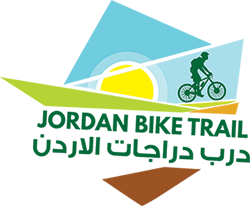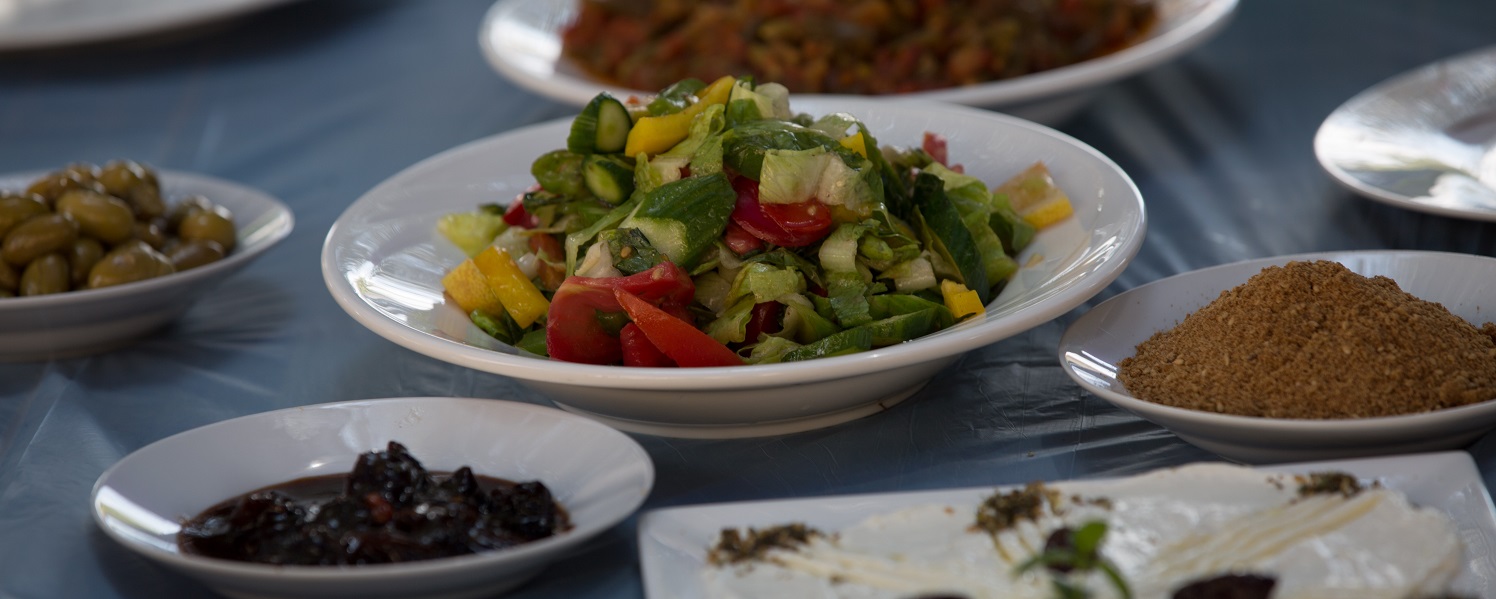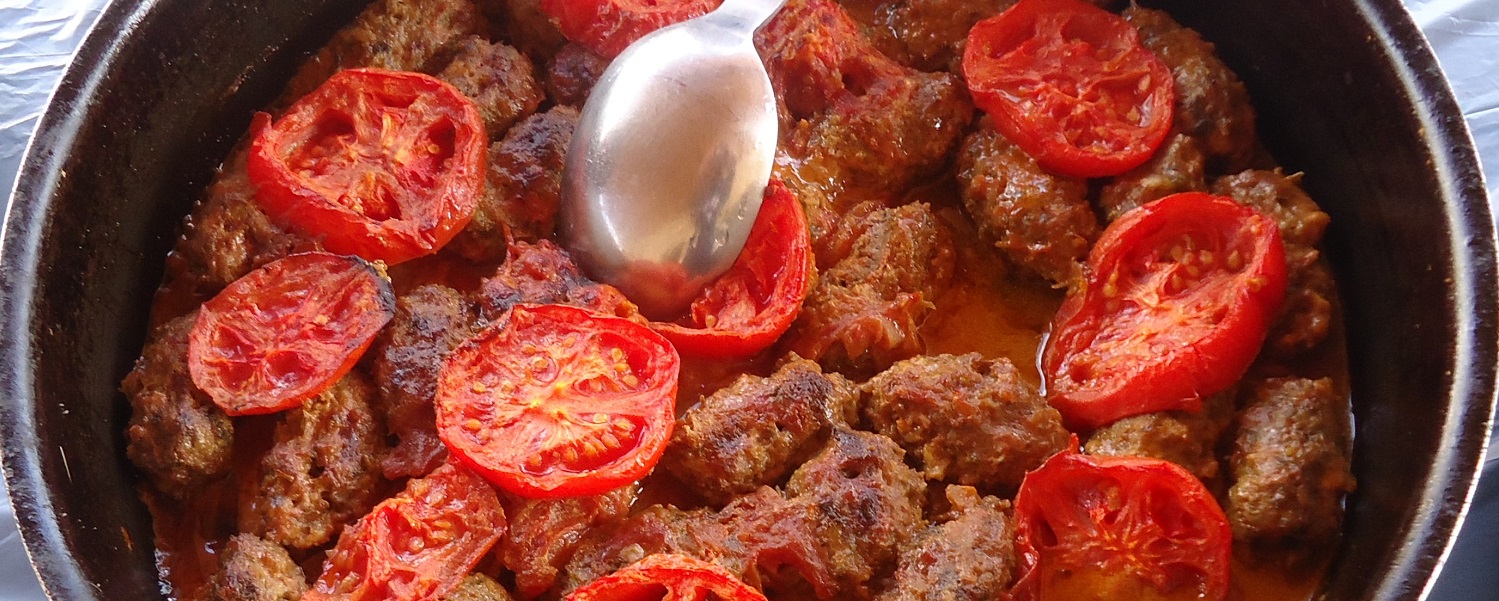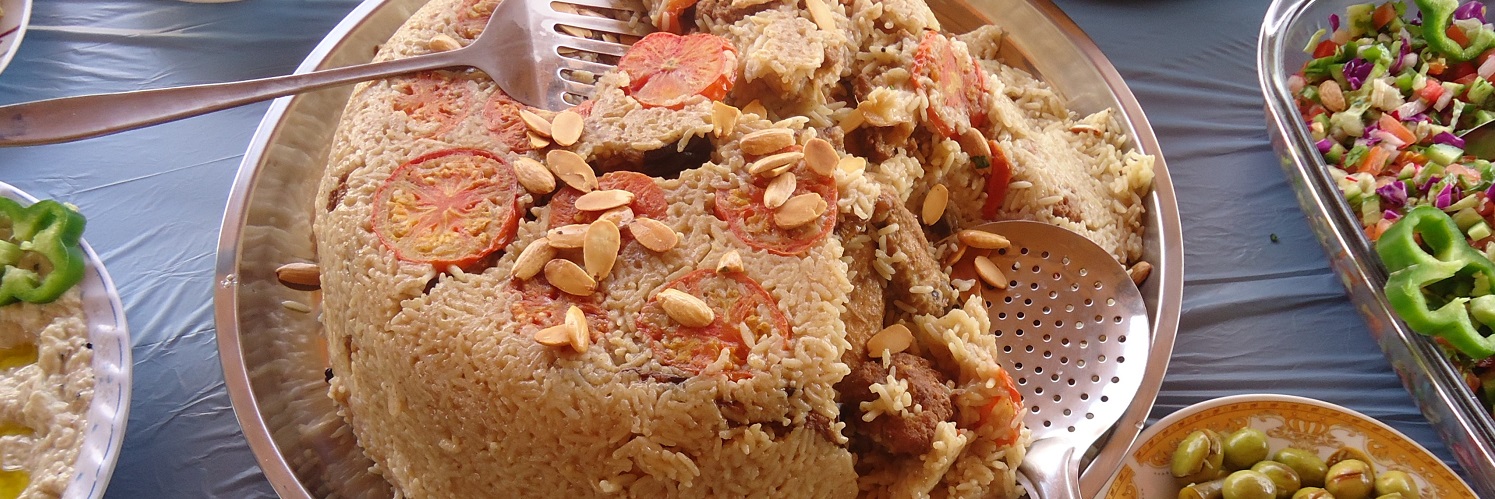- Get informed!
- Cash & Budget
- Cell Providers
- Culture
- Electricity
- Food
- Gear & Spare Parts
- How to get there
- Medical Care
- Packing
- Transportation
- When to go
Before riding the Jordan Bike Trail, especially if you decide set off on your own, there are several things to consider – some of them are specifically related to Jordan, some of them are just generally important. Below, we tried put together the most essential information that will help you prepare your journey.
Please note: Experience has shown that doing the trail on your own is possible, but very challenging. We recommend doing the trail unsupported only if you are an experienced bikepacker, self-sufficient and comfortable to do your own bike maintenance!
For more information concerning your time on the trail, please check our “On the Trail” section above.
If you would like to ride the trail, but feel hesitant to do so independently, there are professional tour companies in Jordan that are happy to offer a tour and take care of planning and logistics for you. You can find tours here.

The currency in Jordan is the Jordanian Dinar (JOD or JD), with a fixed exchange rate of 0.71 JD = 1.00 USD.
Along the Jordan Bike Trail, you’ll have to make most of your purchases in cash, although most hotels will accept credit card. On our maps and in our daily stage notes, we’ve tried to list where there are ATMs — you should pass one every 2-3 days.
- If you’re staying in an accommodation every night, you can expect to spend an average of 40-50 JD per day on your trip.
- Accommodations will range between 20-40 JD per day, while food is likely 10-20 JD depending on how much you eat out.
- If you camp, you can spend less, while supported tours cost more.
You can purchase affordable SIM cards and cell plans upon arrival in Jordan. We recommend Orange, as it has the best reception in Jordan’s remote southern deserts. (Orange offers affordable plans with unlimited local calling, limited international calling, and various amounts of data usage.)
You can buy a SIM card and short term cell plan upon arrival in the Queen Alia Airport. Alternatively, you can purchase the card and plan in one of the many cell shops that are ubiquitous throughout the country.
Jordan is a diverse society containing various religions (although Muslims make up roughly 90% of the population) and many different styles of life — from urban city dwellers, to settled farmers, to semi-nomadic Bedouin shepherds.
You’re sure to encountered Middle East’s famed hospitality along the Jordan Bike Trail; and you’re sure to be offered lots and lots of tea (we’ve even heard stories of people popping out of vans to offer hikers steaming hot cups of tea). Don’t be surprised if a shopkeeper refuses payment when you stop to buy a snack (this is often only a gesture of courtesy though – you should still try to pay!).
Many Jordanians speak foreign languages, particularly English. In urban and touristy areas, you’re very likely to be around people who speak English; in more rural parts of Jordan (much of the trail), you’re less likely to encounter English speakers. Try to learn at least a few Arabic phrases before your trip!
Clothing: Much of Jordanian society is more conservative than western societies. We advise that you cover yourself from shoulder to knee, and we recommend that women generally cover their arms/legs (especially when passing through villages and towns). We would not recommend that women travel alone.
Along most of the trail, alcohol will not be readily available—although in Christian areas (Rmeimeen and Fuheis) there are alcohol shops; the Carakale Brewery in Fuheis is worth a visit.
Ramadan – the 9th month of the Muslim calendar and a month of fasting—is not an ideal time to ride the Jordan Bike Trail. Most stores/restaurants will be closed during the day, and besides the fact that eating/drinking in front of people who are fasting is considered impolite, it is also forbidden by law during the day. The Islamic Calendar is not the same as the Gregorian Calendar, so Ramadan changes dates (according to the Gregorian Calendar) and seasons slightly every year.
Travellers to Jordan should be aware that the treatment of animals here may differ from what you are used to in your home country. According to the standards of many countries in Europe or Northern America this can sometimes be upsetting. The issue is already addressed in society, but takes time to change. If you witness cases of animal abuse within the archaeological park in Petra, you can report them to the authorities there.
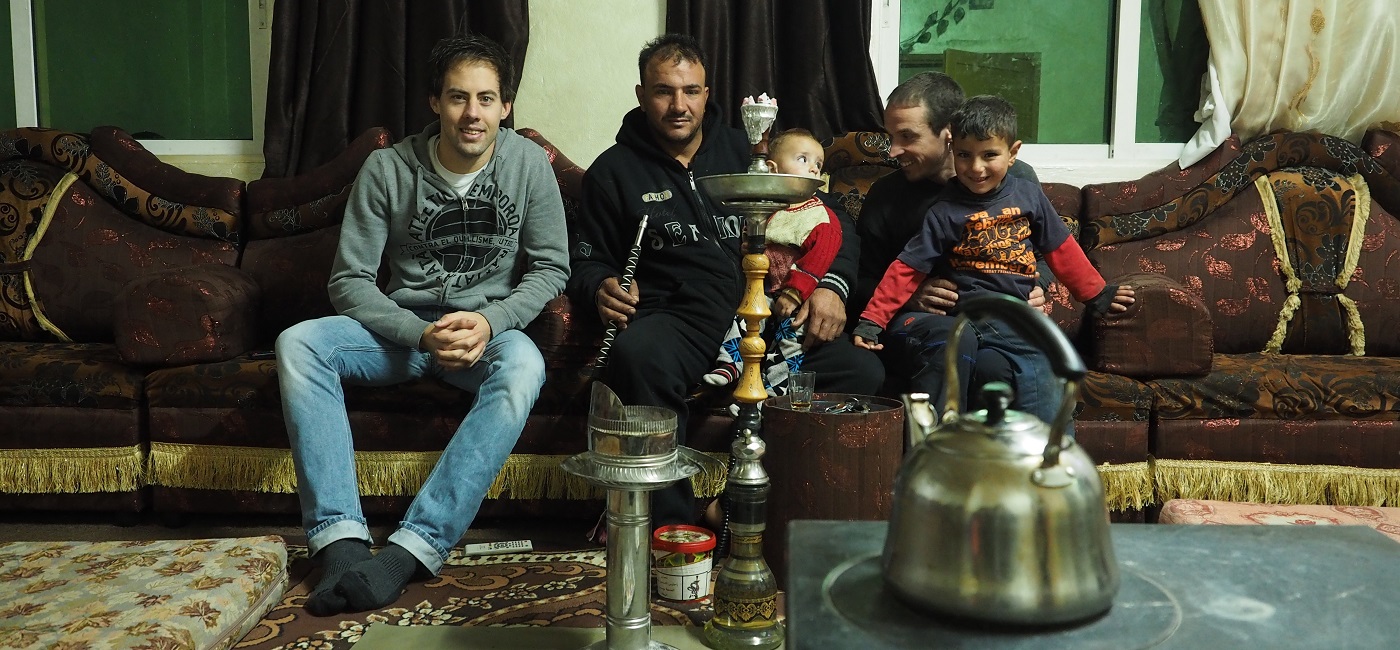
Standard voltage in Jordan is 230V, and there are a range of different power sockets.
Many outlets are a version of the two-prong European outlets; but they’re sometimes a more narrow gauge than European sockets, so not all European plugs/adapters will fit.
A universal adapter is likely to work in Jordanian sockets, but you’re best option might be to buy an adapter in Jordan (available in many local shops in Amman for 1-2JOD)
Jordanian cuisine is tasty! But, it can be heavy on bread and meat—potentially difficult for celiacs, but there are lots of vegetarian options, particularly Jordanian snacks/mezzes like hummus, falafel, tabouleh, lebaneh, baba ganoush, olives, pickles, etc. Mansaf, the national dish of Jordan, is a must!
You’ll pass small shops and restaurants frequently along the Jordan Bike Trail:
- Basic Shops are most common and quite simple. They have basic snacks, drinks (water), and canned meat and/or boxed hummus/cheese. They generally do not have produce and may/may not have bread.
- Produce Shops are slightly less frequent—more common in town centers. They carry a range of fruits and vegetables.
- Bakeries have wonderful Jordanian bread and usually open very early (as opposed to shops).
- Larger Shops (usually in larger towns) have a wider range of food options and often have both produce and bread.
- Restaurants in larger cities will have a range of food options; in smaller towns restaurants are limited to small falafel/shawarma shops.
In waypoints and in stage notes, we’ve tried to identify the different types of shops/restaurants along the Jordan Bike Trail.
The only place in the entire country to buy bike parts is Amman! (Tours & Bike Shops) If you’re doing the trail self-supported, please make sure to bring everything you might need with you (especially tools & spare parts), and be prepared to do any bike-maintenance on your own!
In emergency situations you can phone one of the bike shops in Amman and have spare parts delivered – but this will come at the cost of a (probably long and expensive) taxi ride to transport the part to your location, and at least a day spent waiting.
BY PLANE
Jordan’s biggest and most frequented airport is the Queen Alia International Airport (QAIA) near Amman.
Alternatively, you can also fly to/from Aqaba Airport (also known as King Hussein International Airport) in the south.
From QAIA, buses travel to Amman every hour, on the hour from between 6am and midnight. Overnight, buses leave at 1am, 3am, and 5am. These buses cannot accommodate large bike boxes, but if you have your bike packed in a smaller box and/or both wheels are removed, it’s possible to fit the bike in the bus’s luggage compartment. Tickets cost 3.30JOD. Taxis from the airport to Amman cost 20-25JOD. Some with roof racks can strap larger bike boxes to the top.
LAND ROUTES
There are three land crossings between Jordan and Israel/Palestine:
- Sheikh Hussein/Jordan River Crossing (North): People of most nationalities can buy their visitor visa upon arrival. On the Jordanian side of the border, there’s a taxi stand with listed prices to various Jordanian cities. You can take a taxi directly to Um Qais from here.
- King Hussein/ Allenby Bridge (Dead Sea): Be aware that you must have a Jordanian visa in advance if you are crossing into Jordan at this point of entry. Taxis from the Jordanian side of the border to Amman cost 30JOD.
- Wadi Araba/ Yitzhak Rabin Crossing (South): If you cross at this border, the Jordanian entry visa fee is waived as long as you return through this same border crossing. If you exit by another border, you’ll be charged the visitor visa fee when you leave. You must take a taxi from the Jordanian side of the crossing to Aqaba (12-15JOD; expensive, but it’s the price). From Aqaba, JETT buses travel to Amman multiple times daily (8-10JOD).
visa
Many nationalities can obtain their visa upon arrival at the airports or land borders (NOTE: This is not the case for the King Hussein/Allenby Bridge!); the price for an one month visitor visa is usually 40 JD.
If you intend to visit Petra, we recommend to buy a Jordan Pass in advance of your arrival. While there are various prices/options, the basic 70JOD pass covers your Jordan visitor visa fee and a one day visit to Petra (normally 50JOD), in addition to free entrance to most of Jordan’s other tourist sites.
You can find more information on the website of the Jordan Tourism Board!
Amman to Um Qais
Getting to the start of the trail in Um Qais can be a hassle. A taxi/truck from Amman will cost at least 60 JD.
Alternatively, you can try to get to Um Qais by public transportation. This will take all day (see more in “Transport”). You can also take a JETT bus to Irbid from Amman, then a taxi from there to Um Qais.
The route passes several towns with medical centers/hospitals (Ajloun, Amman, Madaba, Kerak, Wadi Musa), and there are various pharmacies on route.
Bike Setup
You can ride with pannier racks and bags, but we recommend a traditional bikepacking setup, with seatpost bag, frame bag, handlebar bag, and various other top tube bags and gear cages (you may be able to ride with less!). If you’re new to bikepacking, Bikepacking.com has plenty of useful information. Parts of route are rougher than is comfortable for riding with pannier bags. What’s more, riding with bikepacking bags will force you to pack lighter (less space) than with a pannier setup.
Jordan’s climate is relatively mild and will only reach freezing in winter in high elevations, so you won’t have to carry heavy winter gear. Still, if you’re riding in winter or spring, temperatures can be cool and there may be rain, so be prepared with insulating layers and lightweight rain gear.
Since some sections are a bit rough/rocky, we recommend riding a mountain bike. A rigid steel mountain bike without suspension is sufficient, but you may be happy for front suspension on some descents. Since 60% of the route is on pavement, there’s no need for an excessively knobby tire; however, some parts of the route travel through loose, sandy terrain. There, you’ll be happy for a tire well over 2” wide (you’ll likely be walking otherwise).

Sample Packing List
When packing, keep in mind the basic 10 essentials for any wilderness trip. Here’s a sample packing list organized by those categories:
(Remember to pack basic items not covered below, such as: bike clothing (no need for more than what you wear and a change of clothes), toiletries, passport, wallet, lightweight bike lock, etc.!)
-
- Navigation
– GPS unit with tracks
– Mobile phone with navigation app and tracks
– External battery
– USB charging cables
– Spare batteries
– Plug adapter - Sun Protection
– Sunscreen
– Sunglasses
– Long sleeve “sun hoodie” - Insulation
– Base layer
– Lightweight fleece layer - Illumination
– Head lamp
– Headlight
– Rear light
– Spare batteries - First Aid
– Small first aid kit - Fire
– Butane lighter and/or waterproof matches
- Navigation
-
- Spare parts and tools
– Tire irons
– Multi-tool/allen wrench set
– Spoke wrench
– Spare spokes (x4)
– Spare tire
– Spare tubes (if not running tubeless)
– Patch kit
– Chain lube/grease rag
– Spare brake cable (we advise mechanical disc brakes instead of hydraulic brakes for touring)
– Spare shifter cable
– Spare brake pads
– Zip ties
– Chain breaker tool
– Electrical tape
– Pocket knife - Nutrition
– Enough food for the day’s ride, plus a spare meal - Hydration
– Enough water to reach next resupply + spare 1.5L
– 1.5L Naglene (x2) (mounted to front fork)
– 3L Platypus water bladder
– Sawyer water filter and Aqua Mira drops - Emergency Shelter
– Lightweight tarp/ground cloth (also serves as emergency shade)
- Spare parts and tools
Public transportation is available in Jordan, with two different bus systems:
An informal system of minibuses travels throughout Jordan; but, for the most part, there are no fixed timetables. Buses/shared taxis leave when they fill. As general rule, larger buses/minivans travel from major hub to major hub (Irbid, Amman, Madaba, Kerak, Tafila, Wadi Musa, Aqaba), while smaller vans go from these hubs to outlying villages. Some larger buses can accommodate bikes, but you may have to remove both wheels. Be aware that transportation is much less frequent or even nonexistent on Fridays and holidays. From Amman, northbound buses travel from the city’s north bus station, while southbound buses travel from Amman’s south bus station.
JETT buses operate on fixed timetables, with lines that travel to both Petra and Aqaba from Amman (and vice versa). You can (and should) reserve tickets in advance. JETT buses can accommodate bicycles without removing the wheels.
It’s possible to take taxis between cities, but it’s not particularly cheap.
SPRING (Mar-Apr) & FALL (Oct-Dec) are the best seasons to ride the Jordan Bike Trail. During these times of year, temperatures will be comfortable. In the spring, you’re more likely to see flowers in bloom in the North, but there’s a higher likelihood of some rain. In the fall, you’re unlikely to see rain, but there will be less visible plant life. In the extremely arid South, you’re less likely to see rain at all, regardless of the time of year.
WINTER is a suitable time to ride the route. Much of the route (particularly the southern half after Kerak) near or above 1000m. Winter temperatures can actually be quite cool (lows often below freezing), and you may encounter snow (although this isn’t likely). In the North, you’re much more likely to encounter rain/mud in the winter months (Jan-Feb).
SUMMER is not an ideal time to ride. Average temperatures in Amman (800m) are above 32C/90F in Jul/Aug (although temperatures are often much higher), and much of the route is exposed without shade. Moreover, many of the route’s major climbs start from low elevations (ranging from -200m to 200m) in canyon valleys. There, summer temperatures regularly exceed 38C/100F.
Try to avoid riding during Ramadan (see “Culture”), as many stores and restaurants will be closed. While it’simpolite to eat/drink in front of people who are fasting anyways, eating/drinking in public is also forbidden by law during the day.
